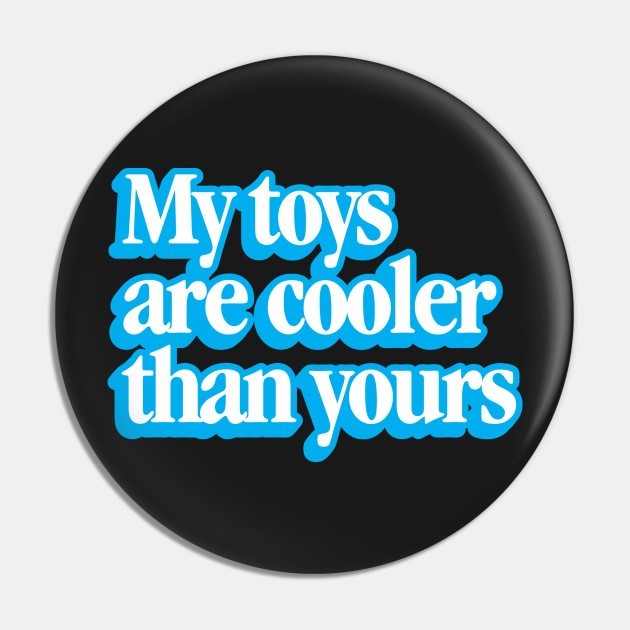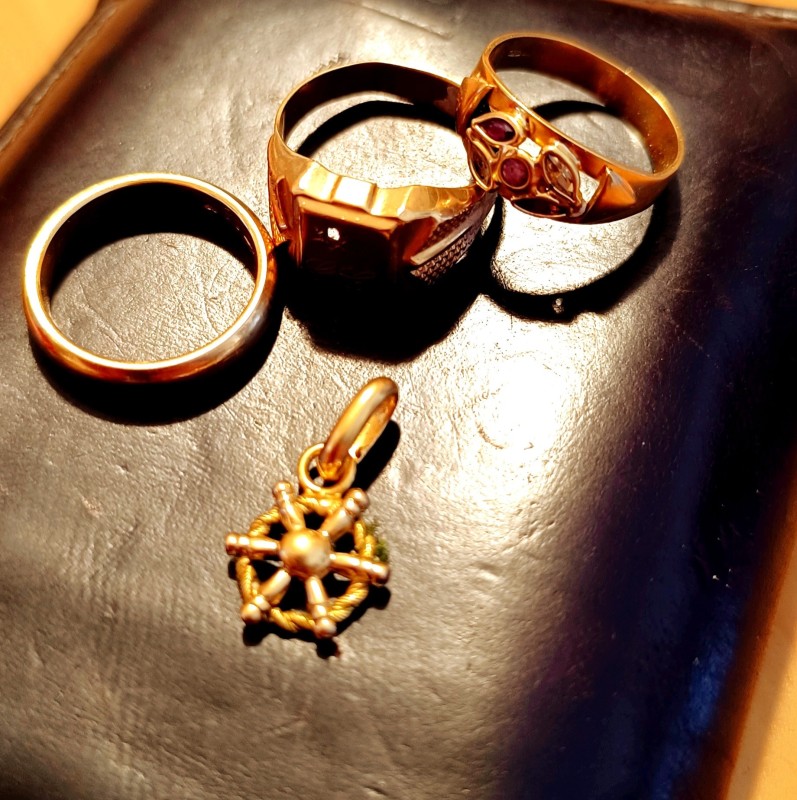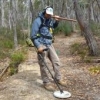Leaderboard
Popular Content
Showing content with the highest reputation on 03/23/2024 in all areas
-
We've added a new mapping layer to the Land Matters Mining Claim Maps. You will find the new layer under the "Claims" mapping group on every mining claim map. It's named "Mining Claim Fees Paid". The mining claim maps start without the new layer displaying so you will need click the checkbox next to the layer name to begin using this map layer. This new map layer shows the total amount of maintenance fees paid to the BLM for each Section since annual Maintenance fees were begun in 1993. These fee totals are for annual maintenance only and do not include filing or locating fees or the costs associated with State recording fees. Mining bonds and permit expenses are not included. Each Section that has had claims during the period from 1979-2024 are represented in green on the map. The more fees that have been paid for the section the darker the green. Some sections may have $0 in fees paid yet show several claims. These are Sections where all claims were closed before the maintenance fees began in 1993. As you zoom in the amount of fees paid will be displayed in the section. In this example the Fees Paid are displayed between the normal active mining claims display. To get Information at any zoom level you can select the information tool and click on your area of interest will return a window with the number of claims and the total of fees paid in that section. As with all our mining claim maps the current or prior existence of mining claims does not mean that the area is now open to new mining claims. What are annual maintenance fees? Until 1993 all Mining Claims were held by completing a minimum of $100 worth of development work per claim per year. This was known as the mining claim labor requirement. If you didn't perform work on your mining claim each year before 1993 they became invalid. In 1993 Congress, at the request of the BLM, enabled claim owners to pay an annual fee of $100 instead of completing their annual claim development work. This brought in funds to the BLM to administer the program as well as relieving them of their responsibility to check existing mining claims for evidence of development work. No longer did the BLM need to do field work to administer mining claims. Since 1993 the annual claim fees have risen to $165 per year for each Lode claim and $165 per 20 acres for each placer claim. Placer claim fees can be as much as $1,320 per claim. Unlike other government programs the mining claim case administration system at the BLM is entirely supported by claim owner fees. These annual mining claim maintenance fees are paid directly to each BLM State office to offset the costs associated with administrating the mining claim case files. No public monies are used. Here are the totals by State of mining claim fees paid for the years 1994 - 2023 Arizona $507,229,955 California $385,681,600 Colorado $380,865,975 Idaho $307,600,865 Montana. $224,791,660 Nevada $1,523,212,855 New Mexico $190,491,505 Oregon $99,909,290 South Dakota $107,769,290 Utah $556,540,015 Washington. $53,075,435 Wyoming $468,886,230 Total $4,806,054,675 Nearly 5 Billion dollars have been spent by mining claim owners to support BLM mining claim administration. The BLM is now collecting more than 83 million dollars in mining claim maintenance fees each year.10 points
-
8 points
-
My son is with me on the island at the moment and we're nutting out the pros and cons of buying an exploration permit in Cape York (see another post).. As we were talking about detector prospecting it struck me the amount of times I mentioned Steve.. As in: 'Steve's timing matrix for the GPX 5000 just about explains all you need to know' or 'Steve explains somewhere about using hot VLF detectors when scrapping away the top layer to find really small nuggets'.. When he asked who Steve was, I was a bit lost as how to explain him.. Somehow I'd made Steve sound like a mate and a guru all at the same time.. So I told him to read what Steve had to say and make up his own mind as to who Steve is.. He read loads of pages I've saved from this forum where Steve explains the finer details about nugget hunting and the technology involved.. As he was reading he mentioned that he now understood much better how his Gold Bug worked.. He's been a bit unconventional in how he uses it as he's mainly a panning and sluicing dude and the Gold Bug is used to scan the ground to get an idea of black sand before he starts carting away buckets of soil.. It seems to work for him.. But it's little things like his moment of understanding that made me realize what an incredible source of knowledge Steve is.. I'm not trying to blow smoke up Steve's arse or score any brownie points but when I think about the amount of times I've referred to his wise words it makes me want to nominate him for nugget hunter Sainthood.. So thanks Steve, your willingness to share your knowledge is very much appreciated - even by the next generation..6 points
-
I was less than neutral about Minelab's Manticore when it was introduced. I wasn't negative about it but I certainly did not celebrate its release or the fanfare that went with it. I waited for almost a year before buying one. Thanks Gerry/Gerry's Detectors for making my Manticore purchase happen!!! I only started using it full time for coin and jewelry hunting around the last week of January 2024 when it warmed up enough here to melt most of the snow. We have had small amounts of snow and cool temperatures since with no hard freezes so hunting for deeper targets in moist soil conditions has been ideal and still is now after the 14" of snow melted from a recent blizzard. So my Manticore has been doing great (so did my Deus 2 with 13X11" coil during September and October of 2023) as far as detecting these deeper, challenging targets shown in the photo by giving me enough information to choose to recover them. Sure, I am digging some rusted nails too but my US wheat penny count for the last two months is 128 and I haven't dug anywhere close to 128 rusted nails. All of these silver, gold and copper target finds have been in public parks. All targets were at least 6" to 12" deep and there were no easy, totally isolated, no brainer finds. All were in high iron mineralized dirt that by itself would mask these targets using single frequency VLF detectors and these parks have plenty of trash to deal with and listen to. Plus, I have hunted these same parks extensively with the Equinox 800 and I did not find those 128 wheat pennies or the targets in the photo. With the Equinox 800, I would average 1 or 2 wheats a week, a silver ring or jewelry find once a week and a silver coin and gold jewelry find once a month at these same parks. I am using All Terrain General with the All Metal discrimination pattern and the ATG Preset default upper and lower ferrous limits unchanged, Normal audio theme, 5 tones with tone volumes, tone pitches and tone breaks adjusted for my preferred targets, recovery speed 4 or 5, and sensitivity between 22 and 24 with the stock 11" coil. Basically, I had no idea that this much silver was still left in these parks and I have only hunted 22 times during the last 2 months in parks that are old enough to have these types of targets. Thanks Minelab for the Manticore!!!5 points
-
September 10 2002 Part Two After lunch I helped Conor get the pump going and told him I was going up to the dig site to have a look at the area Jacob was working. I jumped in my truck and headed up the mountain. When I got over to the area where Jacob was digging I got a good look at what he was talking about. I was amazed. He had started into a section of mountain with a long trench and then was widening out the dig and descending his work down and forming a kind of rectangular shaped hole that was a good twenty feet in width and just as deep. He had backed out of the trench and reset his operation to form a deeper but less steep ramp which had increased his footprint. That allowed him to go deeper than the twenty feet his excavator arm was limited to. Jacob saw me and gave me a grin and climbed down off the machine. We were looking into a big hole where the entire north or back wall as well as the east wall was bedrock. I went down the ramp and got into the bottom of the hole with a pan and personally took out a good sample. Then Jacob and I walked over to a water tub and he watched me pan it out. I could hardly believe my eyes. There in front of me was a pan half full of black sand and the other half heavy gold. Pickers and coarse gold like I had never seen. Clay was in the truck waiting to be loaded and came over to have a look. He let out a soft whistle. I looked at Jacob and told him I was having a hard time believing what I was seeing. My hands were shaking. Jacob just chuckled and told us it just kept getting richer as he got deeper into the cut. I asked him how deep he thought it could go before bottoming in bedrock. Jacob flatly stated he was not sure but if it held up for another several days it was going to get pretty interesting. He said the rich ground might also extend to the west as well because it showed no sign of being contained to the twenty feet of lateral area. He said it was something like the 1936 strike but actually might be much larger. How rich the bottom might be was anyone’s guess. TO BE CONTINUED ...............5 points
-
With my recent use of the Manticore I was concentrating on high conductor targets first, and then, low to mid conductor targets between target IDs 10 and 30 due to the high levels of aluminum trash in my area that has target IDs between 30 and 55. So far, all of the women’s jewelry that I have found and tested which is mostly smaller earrings, smaller chains with pendants, small engagement rings and small bands have all had target IDs between 10 and 30. Larger men’s rings will definitely be between 30 and 60 or so. Modern silver jewelry seems to start around 60 to 65. I owned a CTX for a while but only used it on land. It was similar to swinging a heavy double barreled shotgun! I imagine it would be a different story submerged. The biggest improvements on the Manticore compared to the CTX for me are the much improved response on low/mid conductors, faster target separation, better unmasking in iron, better handling of mineralization, better ergonomics, better user interface, much easier to read screen and the audio enhancements. I do not like the expanded target ID system and the 8 hour max battery life. For you, the vibrating handle for a secondary underwater target alert and the onboard flashlight may be helpful too. The 2D target trace will display multiple targets immediately and simultaneously which for me has been very helpful. CTX kind of did that but at a much slower rate. The Ferrous limits are somewhat similar to the CTX patterns but there are upper and lower ferrous with non ferrous in the middle. As far as Deus 2, I really like mine but I don’t have to look at its screen under water. I have a hard enough time seeing it in daylight. I also dont’ like all the extra hassle of setting it up for hunting with it under water or having to charge up more than two things in order to hunt. Yes, the 25 to almost 85 low and mid conductor target ID range is a bit much. If you want a less expensive option with a good screen, only 50 total non ferrous target IDs and solid underwater performance, the Legend is also a possibility. I have two of them and they are fantastic. Is the Legend as fast as a Deus 2 and equal to it in iron trash and depth……No. The Legend is also not as deep as the Manticore. However, for the money the Legend is still a great bargain and it won’t miss much.4 points
-
Thanks Erik. I’ve never been very comfortable with praise so I’m squirming a bit at the moment. The fact is I learned a great deal from others and did well, and this website was designed as being a way to give back. I taught a lot of people how to nugget detect giving classes in Alaska and nothing gave me more pleasure than seeing those people find their first gold nugget. It’s great that you and your son are able to connect via gold prospecting. So while my first instinct is to blow this off with a self-deprecating joke, I think in this case I’ll just say thank you.4 points
-
After having seen others paint the keys on their Legend I decided to try something totally different. I used Glow Paint. It was tedious, and I can probably get another coat on it but this is how it looks both day and in darkness. I like it. Again, it was tedious due to how the paint is. I used a bamboo skewer to apply the paint inside the button indents. Wiped excess off. Found out it was easier to just coat the button and immediately wipe off excess. This is what it looks like after 12 hrs cure time. The paint used is Glow-on. I had some Neon Green on hand from another project but I'd prefer it to be blue. The stuff isn't cheap but a little goes a long way. https://www.amazon.com/Super-Phosphorescent-Sights-Concentrated-lasting/dp/B00GUA92RQ?ref_=ast_sto_dp Again, this stuff works best in multiple coats. What you are seeing is just a thin single coating. Will probably apply at least one more layer. But giving this 24 hrs between applications works best. Thought you might find it interesting. EDIT: Oh, I also installed a Skinomi screen protector to the display. In the picture it has a blemish but I have since wiped that off. I cut the piece to fit. It's a Matte version of their clear model. Really cuts down on glare in the sunlight.3 points
-
A couple of things to bring to your attention. Drop riffle highbankers require less water flow then your standard riffles. Drop riffles allow the gold to drop out of the water flow, like it happens in nature. Standard riffles require more water flow, to create a low pressure zone, hopefully capturing gold. Larger stones can knock flour gold out of standard riffles, but just roll over drop riffles, where the gold has already dropped out of sight. Because of less water flow, drop riffles run very well on bilge pumps. The California Mini runs nicely using a 1100 gallons per hour pump. The Geo Sluice runs well on a 2000 gallons per hour pump. 12 volt lithium ion batteries are really coming down in prices, and bilge pumps are not a great expense. The lithium ion batteries can purchaced on Amazon or Ebay. I did the math and pricing for running either the Californiaa Mini or the Geo Highbanker with different batteries. You could also run a 6" standard riffle unit on a 1100gallons per hour unit. These are in Canadian prices. US prices will be less. Using a bilge pump is quiet, no gasoline, no oil, no tune-ups, no oil changes and the whole complete system is so light that you can carry it on your back and go just about anywhere. And drop riffles have excellent retention rates for flour gold.3 points
-
A glory hole. Without an excavator we would have never found it. And on top of a faultline. A bit unusual. Kind of like walking down into a secret gold vault. I still get the chills. I found another in a remote area 2000 ft to the south on top of that fault line back in 2020. Completely mined out by the old hydraulic crews. They left me very little. But those old boys missed the one we found in 2002.3 points
-
Why in the world didn't Nokta high light those buttons in the first place (like other companies do).3 points
-
3 points
-
Apologies Reg, yes it could be misconstrued by the unwary 😉 I will edit it 👍3 points
-
Currently pouring in Carson City. If you ever get stuck in northern NV post on 775 Off-road or NV4x4 on FB. People go above and beyond to rescue people that are stuck. They are pay it forward groups. No $ for the help.3 points
-
Aureous, I think you worded that rather poorly, as some may get the impression that I tried to pass that nugget off as American.3 points
-
3 points
-
I've been slow out of the gates for the 3rd year in a row, but hopefully I can follow through better than recently. I do have some ideas for sites I haven't hunted (and if I'm real lucky, no one else has either). But that needs to wait for summer. In the meantime.... A site that has produced modestly (Wheaties and a few silver dimes) in the past has a previously closed area that's opened up. I was able to get out last weekend and give the Manticore a chance. Here's what I found in 3 hours: The highlight is the four silvers, the best of those being the nearly uncirculated 1953-D Roosie. It's a very common date+mintmark but a bonus is that it's from my birth year. Wish I looked that good after 70 years. Maybe being buried in the ground is an advantage! 😁 (On second thought, I'll find out about that soon enough....) The denomination breakdown is interesting but may not be terribly meaningful: three 1-centers (two are Wheaties), nine 5-centers ('nickels), three dimes but two are silver (I'll take that ratio!), no 25-centers at all. Only three of the nickels have dates later than 1964. Has this area ever been searched? And how long has it been 'uninhabited'? Or did someone hunt it decades ago but ignored nickels, not wanting to dig beavertails? Note I found more nickels than imposters (five folded-over beavertails, a couple pencil ferrules, and a misc. scrap of aluminum). The shotgun butt (next to the padlock) is very likely from quite long ago given this area has been settled for longer than I've been alive. The small item left of the padlock is a piece of junk jewelry, probably a broken off pierced earpiece (plated copper with a blue glass 'stone'). I didn't photograph all the trash targets, but that's 2/3 to 3/4 of them. Surprisingly the two Warnicks (1943-P and 1943-S) show the gray patina that is representative of that population which have circulated but never been in the ground. Usually the acid in the soil eats off that surface, leaving the white metal (silver) finish. For one of the two I didn't even realize what it was until I got home and cleaned off the dirt. Only one coin was even close to being challenging -- the Roosie was 7 1/2 inches deep. I picked up a faint but clean signal with the Manticore 11" coil (All Terrain High Conductor mode). While investigating I turned up the sensitivity from 17 to 21, then backed off to 19 for the rest of the hunt. It definitely sounded louder at the higher sensitivity settings. (In my test garden it seems going much higher than 18 smears out the VDI resolution, getting worse the higher the sensitivity. That's why I've been using 17.) Anyway, I'm not done there so hopefully I can show more goodies in the near future. Quantity of hunts has been low but quality of finds the opposite!2 points
-
I've had the Axiom for a about 2 months now and up to this point have just been testing it against other PI's on gold nuggets. The weather looked good enough to head to the Nevada desert this last weekend, so I asked Steve & Steve if they wanted to meet up. They agreed. Weather was a little cold at night, still in the upper 20's low 30's, but day time temps were mid 60's. Perfect metal detecting weather! Steve has been using the Axiom for quite some time now and has always said it really is a great PI. I have to agree, especially if you're looking for a multi purpose PI to use not only gold nugget hunting but relic or beach hunting. I really look at the Axiom as being a great replacement for the now discontinued GPX 5000. The Axiom is far better on small gold than the GPX 5000 IMO and hands down just a better setup overall. It's real nice to have all the functions right there available at you finger tips. Wireless headphones, rechargeable battery that lasts 2 days and great ergonomics just add to the appeal. One thing that's real hard for me to do it put time in on a new metal detector when you're at a site you've used other metal detectors on the past that have a proven track record. I had the Manticore and GPX 6000 with as well. So forcing myself to use the Axiom for 4 hour stretches at a time was hard to say the least. Especially when there was gold being found by others in the party. But using the Axiom did not disappoint and I can confidently say it will find both small and big gold about as good as any other PI's I've used. I used the 7x11 DD coil the entire trip, my settings for the most part were fine gold, sensitivity at 5-6 and threshold at 15. First nugget I found with the Axiom came on day 2 as I was exploring some new ground I hadn't detected over before. I saw a dirt pile a few hundred yards away so worked towards it. About 10 feet away from the pile I got the first signal I'd heard in probably 20 minutes. Turned out to be a .16 gram nugget at about an inch. The second nugget came on the morning of day 3 about 3 hours before I had to leave. I was hunting some large piles of dirt that had lots of junk in them. Got a loud high tone that I figured was going to be trash, but dug it anyway. Turns out it was a large 4.1 gram nugget. Man did that make my trip. Obviously I dug a lot of other junk targets on the trip. But when you're digging bird shot, aluminum foil and small wire you know a machine is capable of finding small gold. Best thing about the trip is everyone found gold. I'll let Steve and Steve chime in if they want with their finds.2 points
-
This is the only thing I disagree with/understand differently. Adjacent iron does make a non-ferrous target look/sound worse (more ferrous) than it otherwise would. 'Masking' is the term I (and I believe the majority of other people who think about such things) use to describe this effect. Whatever techniques you use, and whatever they're called, some will be better, and some will be worse at winkling out 'masked' non-ferrous targets in the ground. Do we agree on the above?2 points
-
Any day with silver in the pouch is a good day on the hunt. arrrrrrrr 🏴☠️2 points
-
Sounds like getting directions from a drunken woman.2 points
-
@Jeff McClendon I'm glad to read your impressions of the Manti, especially since you also own a D2. I have not yet succumbed to the temptation to buy it, because after a year of intensive use of the D2, I was already dreading the difference in discrimination compared to a more precise Ctx despite its 11 years of age. After deciding to sell the D2 and going back to using the old "sniper rifle," the numbers soared again, and I think there is an obvious reason behind this result. I complained strongly on the D2 about too large an allocation of low conductors. Could you confirm that most of the jewels fall in the first part of the scale up to a maximum of 60 points? After viewing hundreds of trials in others' videos, it adds to my impression that the 2d panel is very reminiscent of the Fe/Co meter of the Ctx and that the target trace has been replaced by black traces anyway using a similar system. Certainly this is not rocket science, but the selection of what I need to dig into and invest time or not depends solely on the quality of the signals, and although on the D2 this was done only via audio, an on-screen reference was sorely missed. The recommended X/Y screen, is not even remotely effective in representing a valuable signal. I simply cannot spend too much time digging up every possible signal. Being underwater from fall to spring is just another kind of hunting and does not admit of wasting time playing with the air available. I therefore find myself still using an old and ruined detector with better results. What I can hope for, is that on the Manti I can find more depth and better allocation of low conductors once and for all.2 points
-
I had to replace them for my coils as well. I emailed Ditmar and he gave me the part numbers. Purchased them off of a parts supply store. I have a whole bunch. If you want some, I can send some to you. PM me with your address...2 points
-
Also, they have since came out with the 700, 900, and Manticore! If you really like the machine as is, but want to try another ML, those are your current options! But I don't think those would be much of an improvement for you, seeing that you are in Europe! A Deus 2 might be a consideration, if you decide to shop for an upgrade, as those are doing very well there! As an added note, you can also rollback to your current verson, if you don't like the update! I have had no issues with the last update!🍀👍👍2 points
-
I use an Apex extensively and I doubt if it is your coil. Are you running with iron audio on? If so, that may account for all of the noise. The Apex is almost impossible to swing with iron audio on in sites with a lot of iron. i run mine off and only use it to check questionable targets. Used that way it is in my opinion quite an asset.. Good targets will not have an iron grunt. Not saying it isn't the coil but most detectors can give you trouble in heavy iron. Have you hunted with the detector in other sites than the one that is giving you trouble? If you still think it is the coil then by all means contact Garrett. They have excellent customer service and will most certainly take care of you. Bill2 points
-
2 points
-
Me neither i do not need another detector but I want another detector LOL2 points
-
I buy them off ebay, a dollar or two per grip. Lots of different types and colours to choose from.2 points
-
Hi Del, I think so. I have never used Deus 2's 11" coil however so I can't include it in that answer. I had lots of success with the 13X11" and basically I can call the Manticore 11" coil and Deus 2 13X11" basically equal with Manticore at sensitivity 22 to 24 and Deus 2 sensitivity at 95 or so. If everything hit the fan tomorrow and I had to pick between them for deep high conductor hunting in iron and aluminum trash, right now I would pick the Manticore with the 11" stock coil simply because it feels better on my arm than Deus 2 with the stock shaft swinging that 13X11" coil and the Manticore is easier to setup for water hunting (no setup really) and it is just better for gold prospecting even after XP's improvements for Deus 2's Goldfield program.2 points
-
plus also a big whopper that @Reg Wilson found back in the 90's and an american con-artist tried to pass it off as a US one.2 points
-
Close to 20 yrs ago about this time of year (There was an incredible wind storm in the Anchorage area that day. Even had to evecuate the control tower at the airport) I took one of Steves detecting classes at AMDS. Steve was a great teacher. Summer found a friend & I at Crow Creek trying to find our first detector nuggets. Ran into Steve & he gave up the next couple of hours of his personal hunting time to help my friend & me each find our first nuggets. It was an incredible display of his generocity, and proof that he does indeed find great joy in seeing that smile on someones face when someone not only finds their first detector nugget, but also understands why it was there & how to do it again. Thank you Steve!2 points
-
September 10 2002 Part One Staggering Prospects Clay fired up the old Mack and he and Jacob rode up to the digsite as the sun was coming up. It was fun to watch them in the truck. Jacob was in his element and the two of them were becoming good friends. I got the pump going and Conor and I started processing pay gravel. I was looking at the sluice and the concentrates were showing some nice gold. We were on a real pay streak that could turn our season into a big time strike. We will have to wait to see if the ground holds up over time. Around noon Jacob rode back down the mountain with Clay as Old Bulldog delivered us another lode. We decided to stop for lunch. Over some sandwiches Jacob was talking with us about the pay he was digging. He said he had stopped twice to take some pan samples and he had one with him. It was absolutely brimming with heavy gold. I had to ask him if this was just from one of his pans he sampled and he said yes. Jacob went on to say that this was starting to remind him of the big 1936 gold strike which was just northwest of where he was digging. He said our current dig site was just a little east of the faultline but he had a suspicion that he had started to uncover a big pot hole or kettle at the top of the fault where gold may have been trapped before it traveled along the ancient river another 100 feet and tumbled over the old waterfall in that area. He said the strike of 1936 had occurred at the bottom of the old falls. The gold had piled up in a pothole and was buried over time. He said he was butting up against a rim of bedrock that was dropping straight down. That, according to him, was the first signs of discovering a kettle or natural gold trap. Jacob told us that depending on the size and depth of the kettle there could be the potential for big gold. I asked him what he meant by big. He looked each crew member in the eye one by one and softly said maybe 1000 ounces or even more. TO BE CONTINUED .............2 points
-
In my ground the Nox runs perfectly fine at 24, 25 is starting to play up a little but not much and indeed Target IDs are best at higher sensitivity, deep targets can identify as iron in lower sensitivity when in 24 they give a near perfect ID. If someone was in a higher EMI environment or worse soils, I can see that situation even reversing as they'd never find that deep target anyway and will mess with targets in their range. The Manticore had me fooled when I got it as something like 20 sensitivity on it seems like the Equinox maxed out which coincidently is the default sensitivity setting for the Manticore, and then 20 to 35 is going into unstable territory, not so much for the detector itself, more for Target ID's. As they say 31 to 35 is extreme sensitivity, which the manual says can be counterproductive as targets may be masked by noise. 31 to 35 is great for tiny gold hunting in remote spots with no EMI though, even just flicking to it to help recover the target when it disappears which happens a lot with tiny gold, disturb the soil and the slight move of the piece can put it out of range. I can run the Manticore with complete stability, no EMI chips and falsing yet it's Target ID's are still worse the higher the sensitivity.2 points
-
Ok , this is more of a possibility😆 (is this cheating?): Me: solve the puzzle: what could a gold prospecting invention be with the hints of paddle, pizza and a helicopter? Google Gemini AI: The answer to the puzzle is a suction dredge. Let's break down the hints: Paddle: This suggests something that scoops or separates materials, like a panning operation used in traditional gold prospecting. Pizza (round): This hints at a circular motion, possibly referring to the way the dredge extracts material. Helicopter: This implies something airborne, which could be the method used to deploy the dredge. Combining these clues, a suction dredge emerges as a perfect fit. It uses a rotating intake nozzle to scoop up underwater material and separate the gold flakes through a pressurized water system. Suction dredges can be mounted on helicopters for use in remote locations. EDIT: so now I’m thinking an air powered scoop that you attach to your Keene Blower- it spins and the blades pull in the materials….2 points
-
You guys are amateurs. I've got this one sussed! You drop hot pizza from a helicopter using the paddle cuz it's really HOT, to flip it upside down. It lands on the ground on a suspected gold location. You land the helicopter and check the pizza for nuggets stuck to the cheese ?2 points
-
I updated my Equinox 600 to version 3 about 3 years ago. The 3.0 version adds 4kHz single frequency, I think it was intended for Asian customers, but it's a good option everywhere. You don't lose any custom settings, and supposedly the machine is more stable. I don't see any good reason not to update unless you believe in voodoo 🙂2 points
-
The truth is that for VLF all the top detectors are quite capable. The main difference will be the operator expertise and most importantly, the quality of the location being hunted. Since the machines are fairly close in performance it is things like weight, or tones, or control layout that make the difference. In other words, personal preference. People often think their personal preferences are superior to other people's personal preferences and that the machine they have picked is therefore somehow "better" than the other persons pick. It can get to be an ego thing so people can get pretty heated over something as inconsequential as a metal detector. But it is fodder for discussion sites like this forum as people endlessly compare the finer points of various detectors so I am not one to complain about it. Well, within limits of course.2 points
-
Just depends on the individual piece. Some small specimen gold can bring 10X market price or more but most will be market price or less, since true gold content is less. So like maybe 80% of spot price. Have to figure time and effort also. I'll sell you a small nugget for more per ounce than I will sell you an ounce of the same stuff since my time is worth something. If it's a boring round nugget no big deal. Wire and crystalline gold - sky is the limit. Collectors will pay top dollar for extremely unique gold..... https://www.irocks.com/search?mode=quick&_token=uvGIBnI4Tah8IbSxEEL4ix9s8UmfKzwdIutQglhq&query=gold Basic advice to nugget hunters - it is not the quantity you find, but the quality of what you find. You'd be better off finding one super primo specimen than a jar full of low quality gold. I have sold quite a bit of gold a piece at a time at premium prices and other stuff I just take to a refiner. Note that for collectors an exact location of the find is very important. Generic finds where the finder does not want to reveal where it was found are not going to command nearly as high a premium to a true mineral collector or museum. The provenance is as important as everything else. Some locations are so famous that the gold just being from them will add a premium. Think of mineral collectors as being like coin collectors trying for a full set of proof quality coins.2 points
-
I recently had some doubts in using the main detector and was pondering the possibility of eliminating some by selling. In detail, I complained of some high ID response that I accidentally dug up in the absence of decent signals. The last victorious session, brought me a 6.49-gram 18K wedding ring and by sheer luck, with an amazing 80, I deigned to dig it out. So this morning I decided to go out with a dear old detector, one that doesn't mess around, and the numbers are shocking considering the spot, the devastated condition of the clay and rocks, and lousy visibility. After 4 1/2 hours on the bottom, thanks to the use of hooka compressor, I flushed out 4 pieces totaling 20 "dirty" grams. The numbers speak for themselves, and I am beginning to have clearer ideas.... I will add no more...1 point
-
Hi, I'm new here and I came here to find out if anybody is familiar with this scenario. I bought an Apex last year and I live in an area of New Mexico that is filled with iron, actually found a old 1940's iron which gave me a 92 reading. My concern is my machine does a lot of false readings. I've tried different settings, channels, frequencies, as it is really noisy while showing constant high readings in the range of 84-98, only to find nothing there. As well as additional iron tones on top of the readings. Everywhere I walk it's beeps high numbers, also seems to jump around fast in number display in a fanatic highs and lows. I've done a factory reset, which didn't help. I was reading about how some of models had faulty coil connections which would cause false such readings while swinging and it was a problem with the first 100 produced. I don't know if mine was one on those. Who knows, any advice would be helpful and thanks.1 point
-
1 point
-
The good news is this is a water based acrylic paint. It does not react, destroy, or otherwise harm the keys themselves. I could get out some Dawn detergent, a soft bristle toothbrush, some water, and get it off without any harm whatsoever. That is another reason why I chose it. It's not something that etches into the material like a lot of other paints. You can even put this paint on glass without an issue. Would be glad to prove that to Nokta if it ever becomes an issue with a warranty claim on the control unit itself on down the road. They would be more than welcome to test the paint against their key material for degradation. There would be none. I'm of the opinion they did not put lights under the keys because it may have compromised the solid waterproof rating the Legend has. It's a totally sealed membrane looks like. Putting a clear window under the buttons would have introduced a water intrusion vector after the detector was used for years maybe. Who knows. Glow-On also makes a tape that glows. If one was inclined they could use an X-Acto and cut the tape into fine strips to fit into the indents on the buttons.1 point
-
1 point
-
Everyone speaks of John B's claim in Gold Basin. It was not on BLM land. It was 80 acres he owned. He was one of the founders of WSPA and let all of the members camp and detect his property. I wish I had gotten one of those ouncer club certificates. It was on order.1 point
-
Hi, guys. I'm new to the site and metal detecting, although I've owned my Fisher Gold Strike for nearly a decade. It sat in the closet until very recently. I've taken it out a few times. My wife even found a Black Hills Gold ring within the first five minutes of use in a park! 🙂 I was wondering if some of my experiences (mostly frustration) with the Gold Strike might be worth helping(???) those with Gold Strikes since I see nearly nothing online for settings and the instruction manual is all kinds of confusing in comparison to most other standard detectors. I'm absolutely open to moderators/more experienced Gold Strike owners to edit my information below: Here's how I've gleaned use of the Gold Strike thus far (hope it helps): The GS has a two-tone target audio system: a "low-low" beeping sound (ferrous metals) and a "low-high" beeping sound (non-ferrous metals). This gets overwhelming in "All Metal" mode in most settings but in highly mineralized soil it'll drive you nuts. HINT 1: turn your volume down to 1 and just listen for the "low-high" tones. HINT 2: use headphones - they'll save a ton of batteries. Button 1 -- "MENU" This is pretty much the all-powerful settings button. When you press "Menu", your screen will cycle from left to right through all of your settings. Once you settle on one dial, use the "UP"/"DOWN" arrows to move your choice that direction. Once you are done making your preferences, push the "PP/MEM" button to return to detecting. Button 2 -- "ALL METAL / DISC" "ALL METAL" setting = ALL metal, ferrous and non-ferrous "DISC" setting = actual discrimination setting to weed out specific metals. In DISC mode, highest numbers are non-ferrous only to lowest numbers are for all metal sounds. Button 3 -- "AUTO GROUND" To auto-ground your GS, place the coil on the ground and hold the "Auto Ground" button for 2 seconds. While holding the button, raise your coil approx. 6" off the ground, hold for 1 additional second and release the button. Your GS should be auto-grounded and ready to roll. Manual grounding is more advanced and I haven't gotten that far yet. (Moderators feel free to insert those settings here) Button 4 -- "TRACK" The GS has the ability to "auto-track"-away hot rocks/highly mineralized soil. By selecting the "TRACK" button, you will still get the low-low beeps, but only positive (non-ferrous) targets should get the low-high beeps. HINT: If you see "TRACK" on your screen, tracking is on. If you do not see "TRACK" on your screen, it is off. Button 5 -- "THRESH" The GS Threshold ranges from +4 through -99. If you are in non-mineralized soil (parks, plowed fields, etc.), you would want to be closer to +4 (starting at zero works too). The more mineralized/noisier the ground, push it closer to -99 for heavy mineralization. It is recommended for most soils to be around -5 or -10 to start and see what is working. Button 6 -- "SENS" The Sensitivity button gives you better depth ranging from 0-10. >5 setting is for normal soil. <5 is for more mineralized soil. The higher the number, the better the depth your GS will search. Button 7 -- "LIGHT" is a faint backlight for if you are detecting in fading daylight. Button 8 -- "PP/MEM" You can set up to three specific Memory settings (your GS will keep whatever the last settings were when your machine was shut off the next time you power on). I haven't set any Memories yet so you're gonna have to read your manual on that. The PP setting is your all-powerful button to turn off the MENU button so you can get back to detecting. I believe this is also a "Pinpointer" button but I use a separate pinpointer so I haven't used that setting yet. ==== The numbering system when you find a target on the GS is not a "target" number (i.e. the # does not tell you if its gold/nickel/silver/iron/etc.). The number that shows when you are over a target is for DEPTH = MEANING: The higher the number, the closer to the surface. Use your low-low or low-high sound to tell you if it's worth checking. Also, if you see a "negative" number (i.e. -25), that usually means ferrous metal. If you see a "positive" number (i.e. +33), that usually means non-ferrous. HINT: The GS does not distinguish between "long metals" (i.e. nails, spikes, etc.). If you are getting a low-high signal, do a "90-degree sweep" to verify that it stays low-high. If you run it 90-degrees and it goes from low-high to low-low, you may be getting ferrous. == Here are some basic settings for the four main "search fields". These MAY be off slightly. Moderators: feel free to adjust them if I've got them wrong. 🙂 PARK - Auto-ground (if you're experienced, feel free to manual ground), THRESH +0 to +4, SENS >5, DISC higher setting, TRACK OFF -- if you choose TRACK ON, THRESH should be -5 to -10 FIELD - Auto-ground, THRESH +0 TO -10, SENS >5...10, DISC (up for ALL METALS, down for non-ferrous), TRACK OFF -- if you choose TRACK ON, THRESH should be -5 to -10 BEACH - Auto-ground, THRESH -99 (your ears will thank me), SENS <5, ALL METAL ON, TRACK ON GOLD FIELD - Auto-ground, THRESH -99, SENS <5, DISC closer to -99 or ALL METAL, TRACK ON == Like I said, I'm a NEWB so all of the above may be total rubbish - the moderators can correct/remove anything that is incorrect. Thus far, at least they seem to be closer to working since the GS is NOT a turn-and-burn machine like the original Gold Bugs. I hope this post can help someone and give the Gold Strike a chance against all the new, fabulous machines out there. I DO know the Gold Strike WILL find gold - my wife's discovery in five minutes is a perfect example. But this machine WILL test your patience until you work out the kinks. Hope this helps. THANK YOU to the folks in this forum. You're more helpful than you can imagine. 🙂 Cheers from Oregon.1 point
-
Well F350, you definitely put that program to the test! It seems to fair better in very low trash environs. I have a lot of "iron only" sites so I'll see how it performs in those conditions. You note that it does well finding the small nonferrous targets in the iron. I would agree but on my last hunt I was surprised to find several large nonferrous targets like brass horse tack and lantern pieces in the iron. I think all that Disc finally made them sound good enough to dig. I do like that brooch! Glad to see you were rewarded for your efforts with another 100 acres to hunt.1 point
-
I don’t think he’s had time to accumulate any debris under the coil cover... Imho I think you’ve got a faulty LG24. It sounds like a loose connection somewhere internally. At the beach I can knock the wet sand off mine by banging it on my shoe and not a murmur from it. Yours is definitely knock sensitive by the sounds.1 point
-
September 9 2002 Big Time Gold Again The morning finally came. I didn’t sleep all that well. I kept thinking about the gold weigh. What if we were wrong and were over estimating how much gold was in the concentrates from 100 yards of washed gravel? Today we found out. We finished the cleanup just after noon. It was a good one. We had 29 ounces of gold. Nearly 9 grams to the yard. Jacob was right, we are onto something special. If this holds up we are going to end the year on a high note. Big Clay was dancing around camp at lunch time like he was a new millionaire or something. Everyone was in a good mood. We finished lunch and got back to mining and worked straight through until dusk. The tom had processed 60 yards of gravel and we could see the pickers practically jumping out of the sluice. Jacob said we would run another day and then do a cleanup. The morning couldn’t come fast enough for us. TO BE CONTINUED ..................1 point
-
Must admit i totally agree with you 100% on that statement,some of my detectors especially my T2 are 17 years old but that detectors has found me more hammered and milled gold coins than all my other machines put together,it must be about one of the simplest machines to operate.1 point
-
I do it when I can Joe...But I'm afraid I have a curse with action cams. Every time I take one with me on the mask, it drains the battery before the magic moment, or the focus fusses and it looks terrible... Or worse, nothing comes out and I capture a whole film of garbage. Conversely, when I am without cameras, the craziest things happen and you would hardly believe it1 point





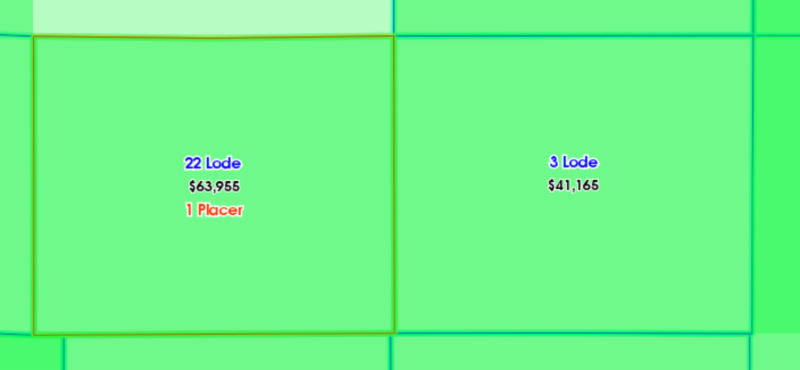
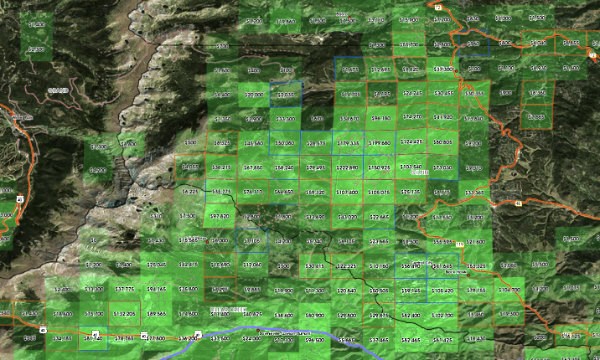
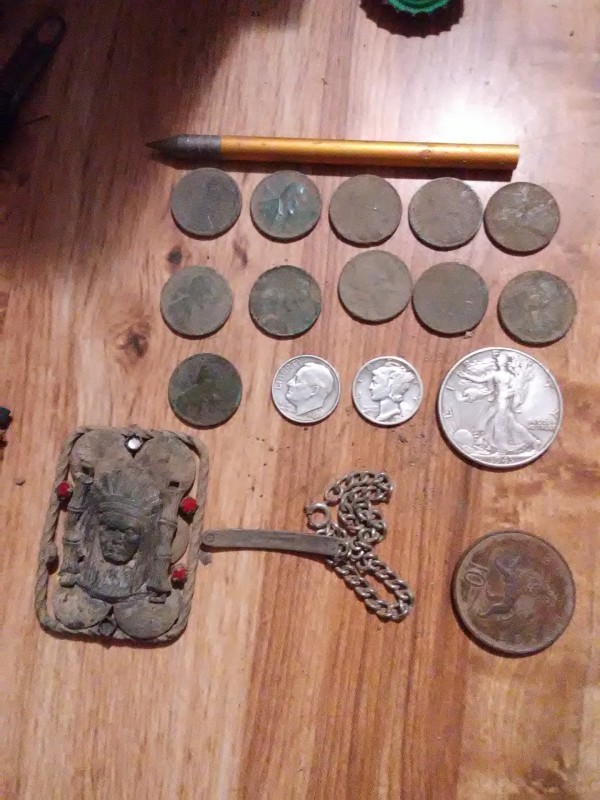
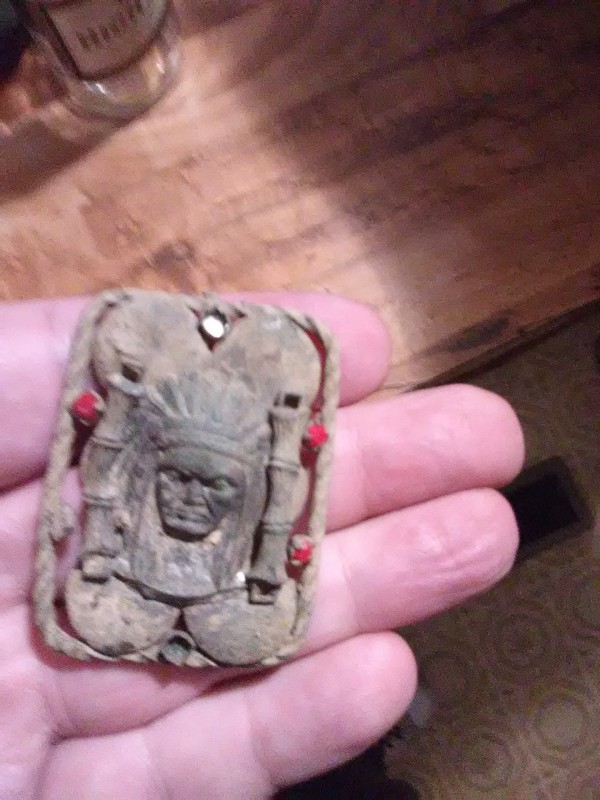

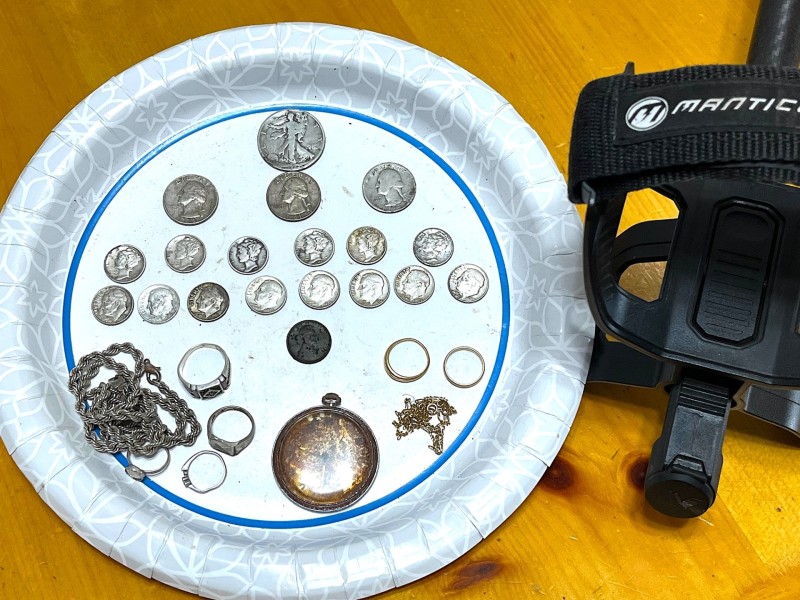

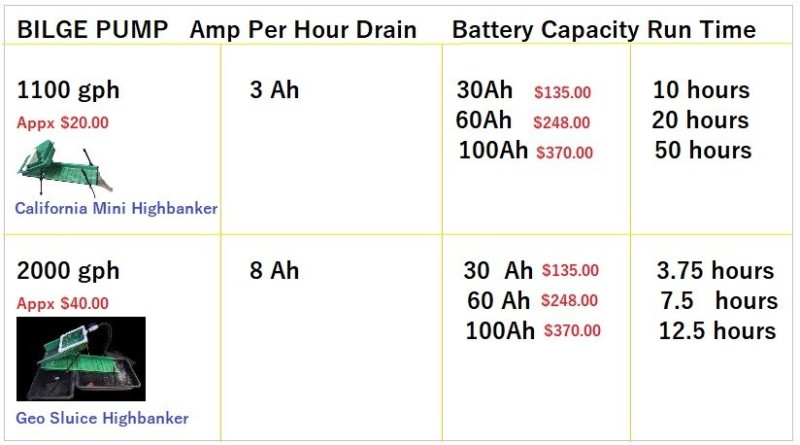

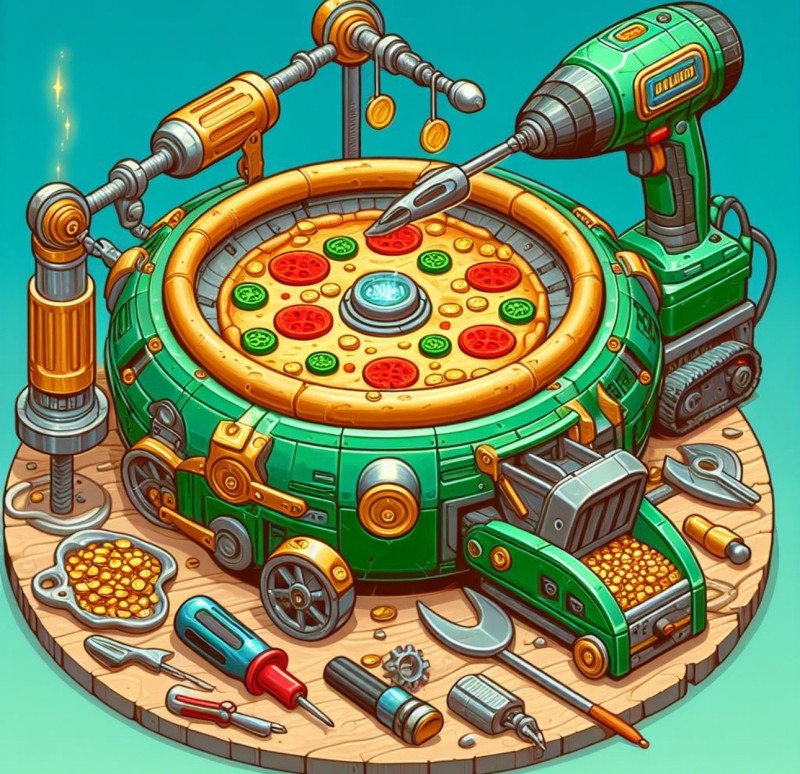
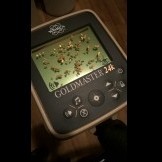
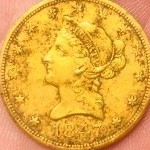

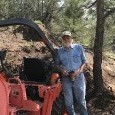
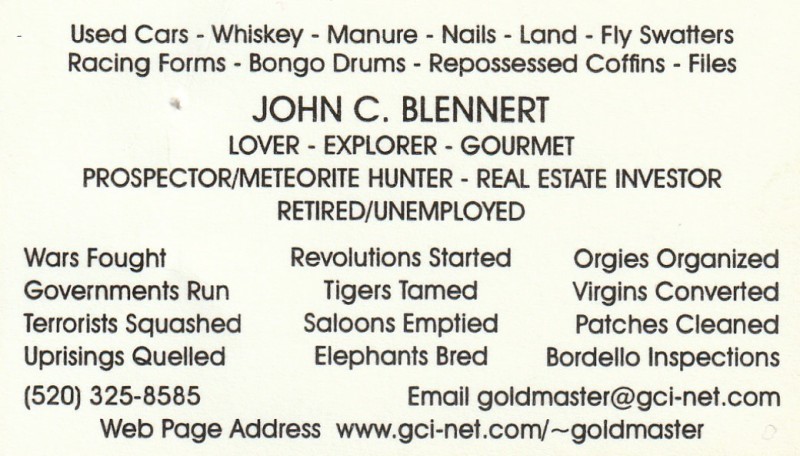


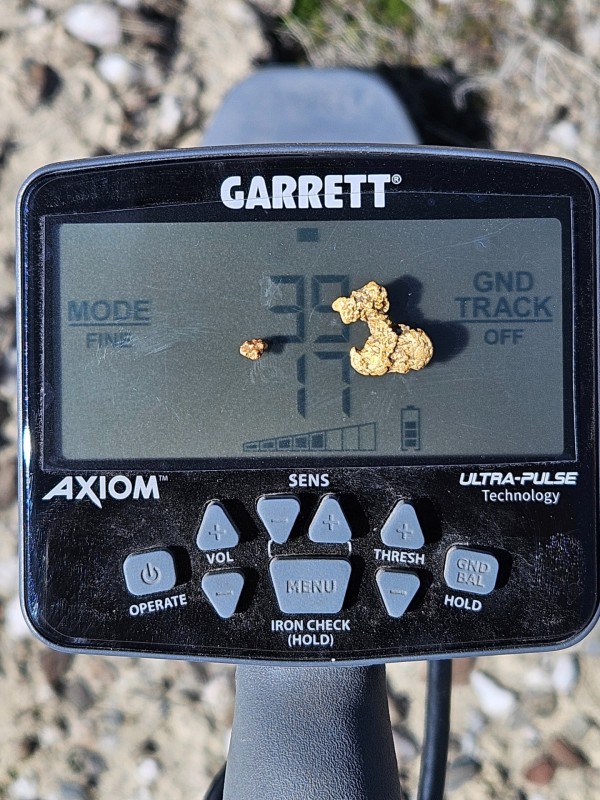
.thumb.jpg.95344db3aeef0a4c6c73420daa366191.jpg)




.thumb.jpg.8761b3d9b3da119b9e6d1912f67275ad.jpg)
